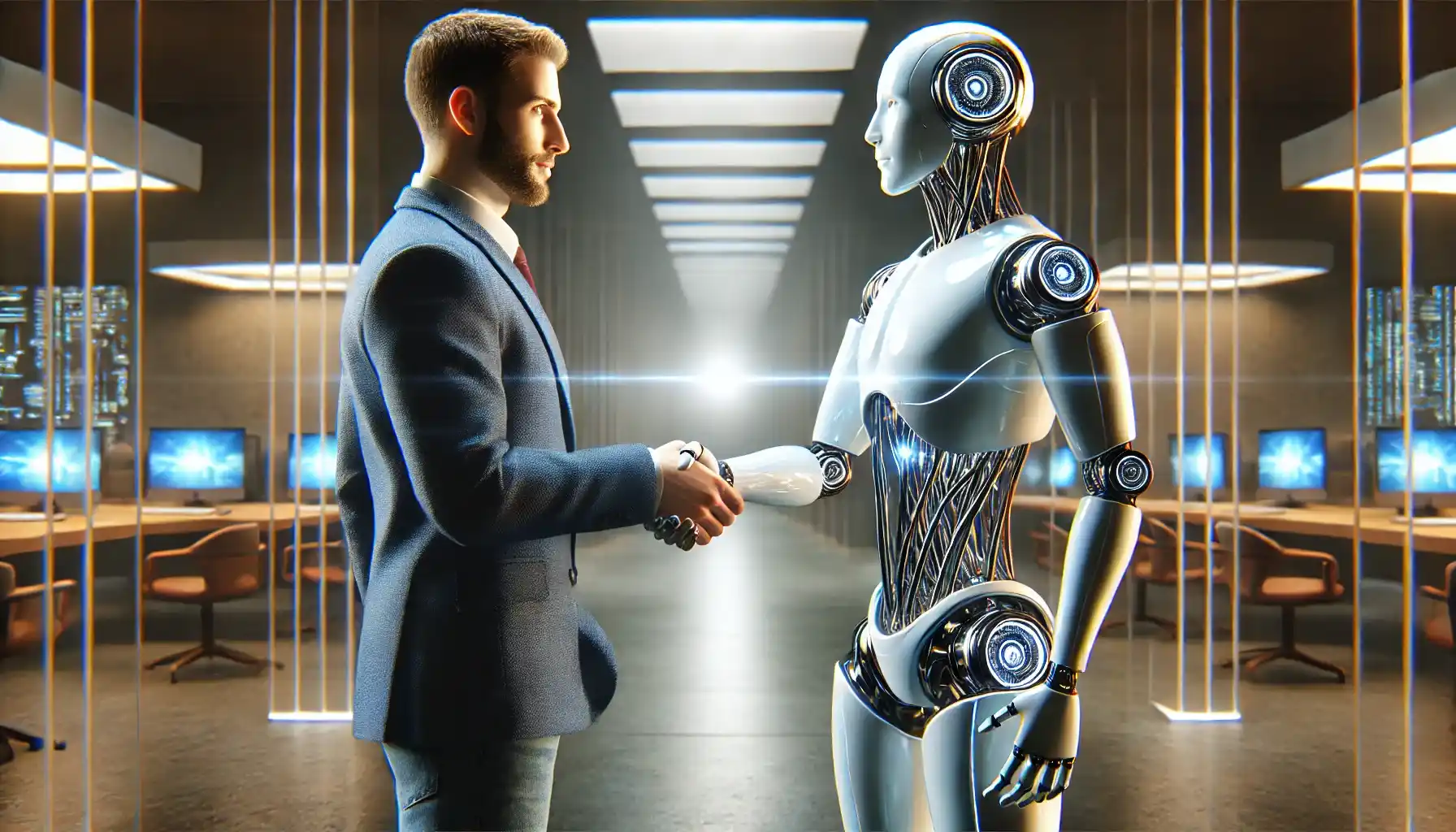Have you ever held an old coin and thought: What if this was rare? What if its worth wasn’t just cents but thousands of dollars? Take the 1943 bronze penny value—a simple mistake in the minting process turned it into a valuable collector’s specimen: some selling for over a million dollars.
Now, imagine a similar phenomenon happening in the digital space: a tool so powerful that it can turn ideas into fully functioning applications in mere moments. That’s AI in app development.
But how exactly does this technological wizardry work? Today we’re going to explain everything to you.
AI: Born from an Idea, Raised to Make Sense
Once upon a time, the idea of machine thinking was pure fantasy. But the greatest innovations often start as impossible dreams. Here’s how everything developed through the time:
The 1950s: The birth of artificial intelligence as a concept. Alan Turing asks, “Can machines think?”—and the race begins.
The 1970s-80s: Rule-based AI systems emerge, but they’re rigid—more like an overcomplicated calculator than a thinker.
The 1990s-2000s: Machine learning lets AI improve itself.
2010s-Present: Deep learning, neural networks and AI-powered tools (e.g., ChatGPT, MidJourney, GitHub Copilot, DeepSeek AI, etc) push boundaries beyond imagination.
Today, AI anticipates our needs, suggests solutions and even creates things we hadn’t thought of yet.

How AI Influences App Development
Once, creating an app required hours (or even months) of hard work, coffee-fueled coding sessions and endless debugging. Now? AI is an expert craftsman that turns raw ideas into polished applications at lightning speed.
1. AI-Powered Code Generation: From Idea to Execution
Forget hours of typing lines of code—just describe what you want, and AI writes it for you.
Example:
Prompt: “Create a login page with email and password validation in JavaScript.”
AI’s Response:
function validateLogin(email, password) {
if (!email.includes(“@”)) return “Invalid email format.”;
if (password.length < 8) return “Password too short.”;
return “Login successful!”;
}
console.log(validateLogin(“[email protected]”, “password123”));
(And just like that—you’ve got a login system!)
2. Debugging on Autopilot: AI, the Digital Detective
Got a bug? AI finds it. No more head-scratching over a missing semicolon.
Real-world case: GitHub Copilot doesn’t just suggest code—it detects potential errors and security flaws. This, in turn, saves developers hours of frustration.
3. UX/UI Optimization: Data, Not Just Instinct
Want a stunning, user-friendly app? AI can analyze user behavior and tell you what works.
Example: AI-driven tools, e.g., Adobe Sensei, predict where users will click the most. So, designers can adjust their layouts for maximum engagement.
4. Voice & Image Recognition: Apps That See, Hear & Understand
There are Siri and Google Lens, for example. AI-powered apps process voice commands and images with near-human accuracy.
Example:
Prompt: “Create a voice-activated note-taking app.”
AI’s Response:
import speech_recognition as sr
recognizer = sr.Recognizer()
with sr.Microphone() as source:
print(“Say something…”)
audio = recognizer.listen(source)
print(“You said:”, recognizer.recognize_google(audio))
(And now, your app listens and writes what you say!)
5. Data-Driven Details: More Tips, More Success
Want to know which features users love? AI digs through data, spots trends and helps businesses make good decisions.
Example: AI in Google Analytics identifies which parts of an app drive the most engagement, allowing developers to fine-tune the experience.
AI in Action: A Peek Behind the Curtain
Scenario 1:
Developer: “I need a chatbot for customer service.”
AI: “How about a chatbot that handles FAQs and escalates complex issues to a human?”
Developer: “Yes! Generate the code.”
AI:
from chatbot_library import ChatBot
bot = ChatBot(name=”HelpBot”)
bot.train([“How do I reset my password?”, “Click on ‘Forgot Password’ and follow the steps.”])
bot.run()
(Boom! Customer support is now automated!)
Scenario 2:
Entrepreneur: “I want an app that suggests recipes based on ingredients I have.”
AI: “Here’s a machine learning model that predicts recipes based on available food items.”

The Good, The Bad & The Unexpected
AI is a double-edged sword—powerful and unpredictable at the same time. Let’s weigh the scales.
The Pros:
✔ Lightning-fast Development – Apps that took weeks? Now they take hours.
✔ Fewer Errors – AI spots mistakes humans might miss.
✔ Democratization of Coding – No coding skills? No problem—AI has your back.
The Cons:
❌ Lack of Human Creativity – AI can optimize, but can it innovate?
❌ Security Risks – AI writes code, but can it ensure it’s bulletproof?
❌ Over-Reliance – The more we depend on AI, the less we might develop our own coding skills.
So, Will AI Replace Developers?
Not so fast. AI is a great tool, but still not a replacement for human ingenuity. It may be compared with a paintbrush—it can create masterpieces, but only when wielded by the right hands.
Your Takeaway: The best apps aren’t just made by AI—they’re made by humans who know how to use AI smartly.
So, one thing’s for sure: the future of app development is being rewritten. And AI? It’s holding the pen.
“The best way to predict the future is to create it.” – Peter Drucker
AI is here. Are you ready to build with it?
